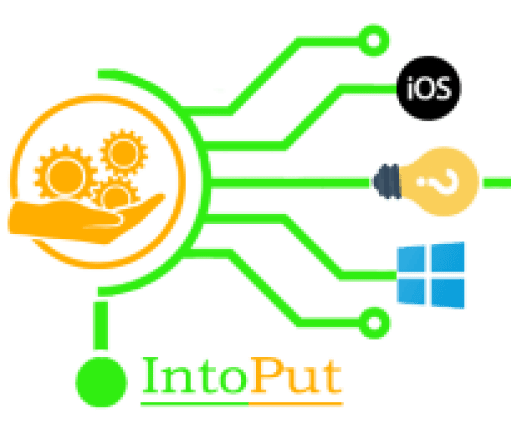The UK Marriage Visa, also known as a spouse visa, allows individuals to join their partner who is a British citizen or has settled status in the UK. This visa is specifically designed for couples who are legally married or in a civil partnership, enabling them to live together in the UK. Navigating the process of applying for a UK Marriage Visa can seem daunting due to the strict eligibility requirements and extensive documentation involved. However, with the right information and preparation, the process can be successfully completed. This comprehensive guide will explain everything you need to know about the UK Marriage Visa, including eligibility criteria, the application process, required documents, fees, and tips for a successful application.
1. Understanding the UK Marriage Visa
The UK Marriage Visa falls under the family visa category and is designed for married or civil partners of British citizens, individuals with indefinite leave to remain (ILR), or those with refugee status. The visa allows the applicant to enter and reside in the UK for an initial period of 2 years and 9 months (or 2 years and 6 months if applying from within the UK). After this period, the visa can be extended, and the applicant may eventually apply for indefinite leave to remain (ILR) after meeting specific residency requirements.
The UK government enforces stringent conditions to ensure that the relationship is genuine and that the applicant meets financial and language requirements. It is essential to meet these criteria to avoid delays or rejections in the application process.
2. Eligibility Criteria for a UK Marriage Visa
To qualify for a UK Marriage Visa, you must meet the following eligibility requirements:
2.1 Relationship Requirements
- You and your partner must be legally married or in a civil partnership that is recognized in the UK.
- Your relationship must be genuine and subsisting, meaning you are in a real relationship and intend to live together permanently.
- You must have met in person before applying for the visa.
- If either partner was previously married or in a civil partnership, it must be legally terminated.
2.2 Financial Requirements
- The sponsoring partner (the British citizen or settled person) must meet a minimum income threshold of £18,600 per year.
- If there are children involved, an additional £3,800 per year is required for the first child and £2,400 per year for each subsequent child.
- Income can come from employment, self-employment, savings, pensions, or other specified sources.
- Savings over £16,000 can be used to supplement income shortfalls.
2.3 Accommodation Requirements
- You must demonstrate that you have adequate accommodation available in the UK without the need for public funds.
- The accommodation must meet UK living standards and be suitable for the number of occupants.
2.4 English Language Requirement
- The applicant must prove their English proficiency by passing an approved English language test at CEFR level A1 or higher.
- Citizens of majority English-speaking countries, such as the USA, Canada, and Australia, are exempt from this requirement.
- If the applicant has a degree taught in English, this may also satisfy the language requirement.
3. Required Documents for a UK Marriage Visa
Providing accurate and complete documentation is crucial for a successful visa application. The following documents are typically required:
3.1 Personal Documents
- Valid passport for the applicant (and any previous passports).
- Proof of your partner’s British citizenship, ILR, or settled status (e.g., passport, biometric residence permit).
- Marriage or civil partnership certificate.
- Divorce certificate (if applicable).
- Evidence of meeting in person (e.g., photographs, travel records).
3.2 Financial Evidence
- Payslips and bank statements showing income for the past 6 months.
- Employment contract or letter from employer confirming job details.
- Self-employed individuals must provide tax returns, business accounts, and evidence of earnings.
- Evidence of savings, if applicable.
3.3 Accommodation Evidence
- Tenancy agreement, property deed, or mortgage statement.
- A letter from the property owner if you are renting from family or friends.
- Property inspection report (if necessary).
3.4 English Language Evidence
- Test certificate from an approved English language provider.
- Degree certificate and confirmation of equivalency from UK NARIC, if applicable.
3.5 Relationship Evidence
- Proof of a genuine relationship, such as:
- Joint bank accounts.
- Shared bills (utilities, rent).
- Communication records (emails, chat messages, call logs).
- Travel itineraries and photos together.
4. Step-by-Step Application Process for a UK Marriage Visa
The application process for a UK Marriage Visa involves several stages. Here is a step-by-step guide to help you through:
Step 1: Complete the Online Application
- Begin by completing the online application form on the UK government’s official website (gov.uk).
- Choose the appropriate visa category: family visa > spouse or partner.
- Provide accurate details about yourself, your partner, and your relationship.
Step 2: Pay the Visa Fees
- Pay the visa application fee, which is currently £1,846 for applications made outside the UK and £1,048 for applications made within the UK.
- In addition to the visa fee, you must pay the Immigration Health Surcharge (IHS), which grants access to NHS healthcare. The IHS is currently £624 per year.
Step 3: Book a Biometrics Appointment
- After submitting the application, you will need to attend a biometrics appointment at a visa application center (VAC).
- At this appointment, your fingerprints, photograph, and other biometric data will be collected.
Step 4: Submit Supporting Documents
- Upload or submit all required documents as part of your application.
- Some VACs offer document scanning services.
Step 5: Await a Decision
- Visa processing times vary depending on where you apply from:
- Outside the UK: 12 weeks on average.
- Inside the UK: 8 weeks on average.
- You can pay for priority services to expedite the decision-making process.
Step 6: Collect Your Visa
- If approved, you will receive a vignette (sticker) in your passport, allowing entry into the UK.
- You must travel to the UK within 30 days and collect your Biometric Residence Permit (BRP) from a designated location.
5. Fees and Processing Times for a UK Marriage Visa
| Type of Fee | Amount (£) |
|---|---|
| Application Fee (outside UK) | 1,846 |
| Application Fee (inside UK) | 1,048 |
| Immigration Health Surcharge | 624/year |
| Priority Service (optional) | 573 (5 working days) |
| Super Priority Service | 800 (next working day) |
6. Tips for a Successful UK Marriage Visa Application
- Provide Clear and Genuine Evidence: Ensure all documents are accurate, complete, and consistent.
- Meet Financial Requirements: Verify your income or savings meet the threshold and include relevant evidence.
- Prepare for the Interview (if required): Some applicants may be invited for an interview to confirm the genuineness of the relationship.
- Check Document Translations: Any documents not in English must be translated by an accredited translator.
- Apply Early: Begin the process well in advance to avoid delays.
- Use Professional Advice: Consider hiring an immigration lawyer if your case is complex.
7. Common Reasons for UK Marriage Visa Refusals
Understanding common reasons for visa refusals can help you avoid costly mistakes:
- Insufficient financial evidence.
- Failure to prove the relationship is genuine.
- Missing or incomplete documentation.
- Errors in the application form.
- Not meeting the English language requirement.
- Inadequate accommodation evidence.
If your application is refused, you will receive a refusal letter explaining the reasons and your right to appeal or reapply.
8. Conclusion
Applying for a UK Marriage Visa can be complex, but understanding the eligibility criteria, preparing the necessary documents, and following the correct steps can greatly improve your chances of success. Whether you are reuniting with your spouse or starting a new chapter in the UK, the key to a smooth application lies in attention to detail and thorough preparation. By meeting all requirements and presenting clear evidence, you can successfully secure your UK Marriage Visa and build a future with your partner in the UK.
If you are uncertain about any step or face complications, consulting with an immigration lawyer can provide you with additional support and guidance. Best of luck with your UK Marriage Visa application!

